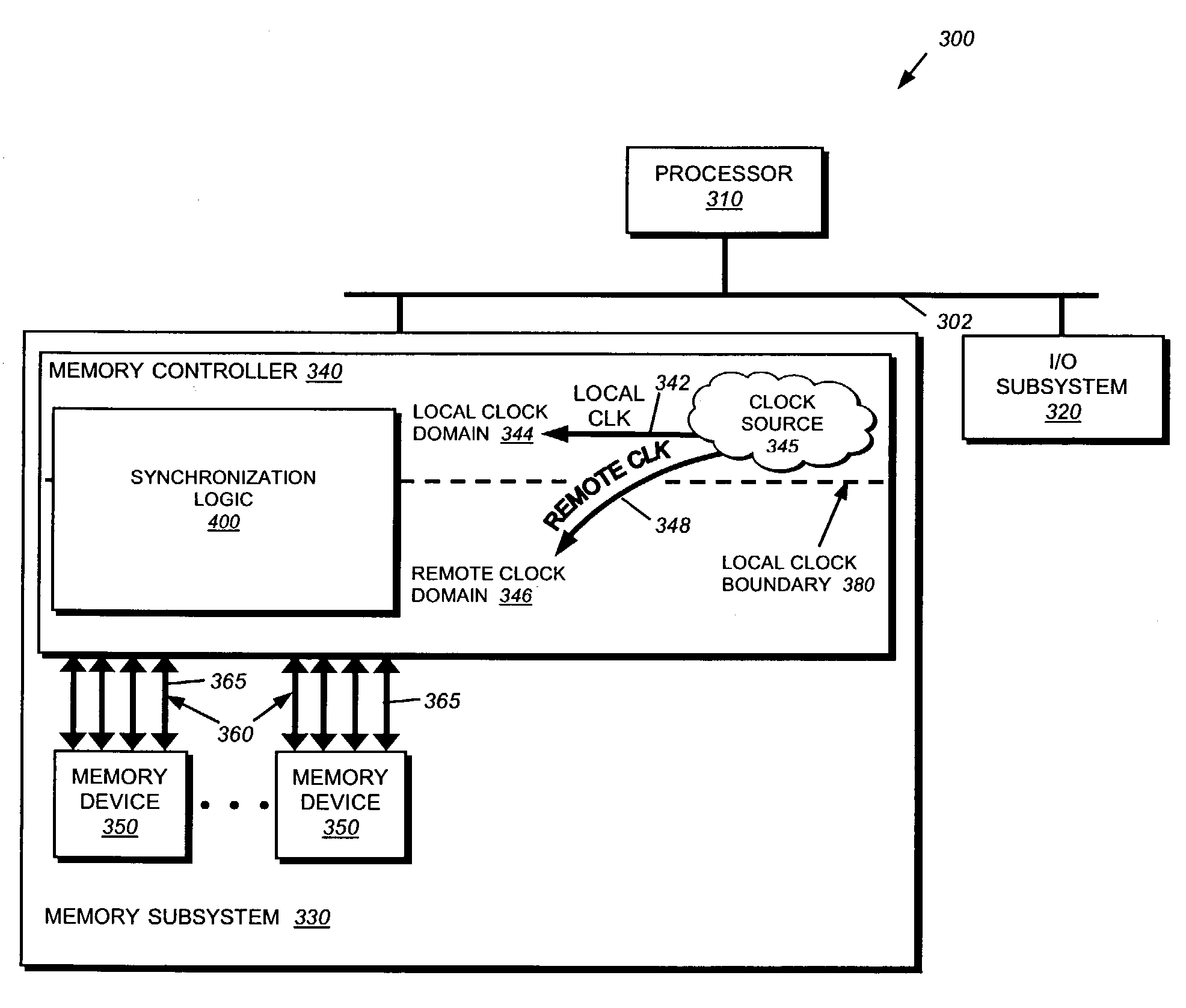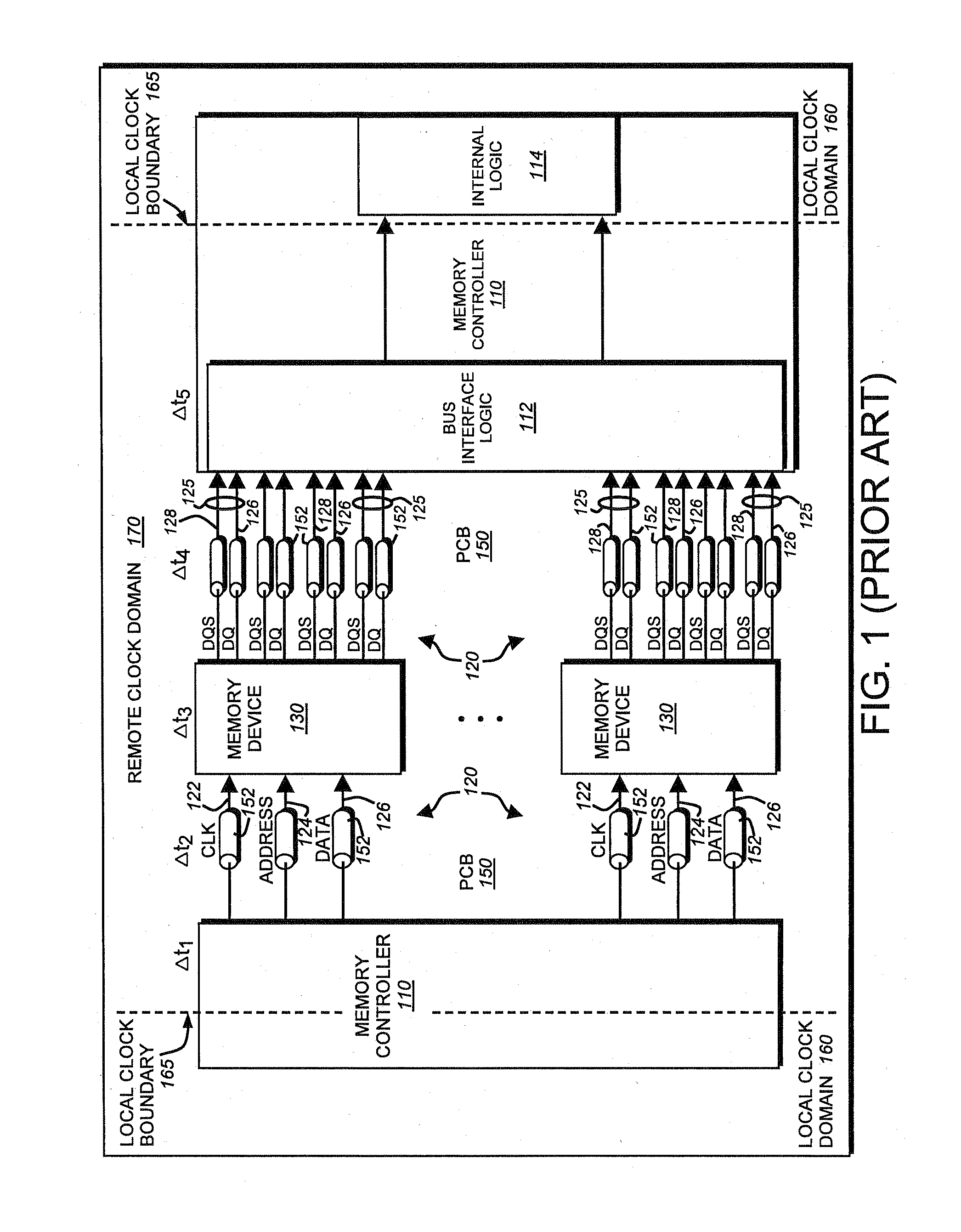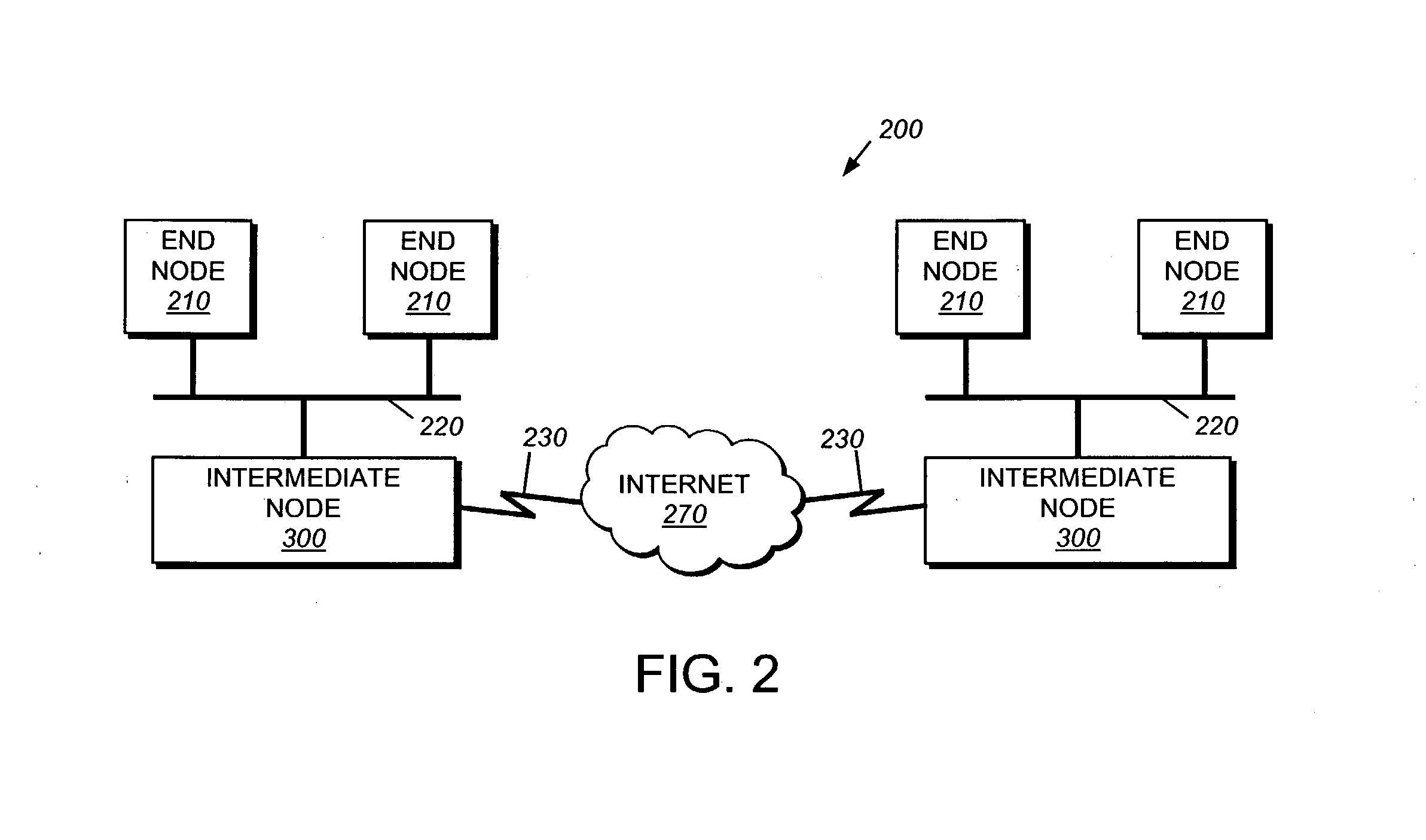Synchronization technique for high speed memory subsystem
a high-speed memory and sub-system technology, applied in the field of memory sub-systems, can solve the problems of increasing the amount of time, and affecting the reliability of data transmission
- Summary
- Abstract
- Description
- Claims
- Application Information
AI Technical Summary
Benefits of technology
Problems solved by technology
Method used
Image
Examples
Embodiment Construction
[0028]FIG. 2 is a schematic block diagram of a computer network 200 that can be advantageously used with the present invention. The computer network 200 comprises a collection of communication links and segments connected to a plurality of nodes, such as end nodes 210 and intermediate network nodes 300. The network links and segments may comprise local area networks (LANs) 220, wide area networks (WANs) such as Internet 270 and WAN links 230 interconnected by intermediate network nodes 300, such as network switches or routers, to form an internetwork of computer nodes. These inter-networked nodes communicate by exchanging data packets according to a predefined set of protocols, such as the Transmission Control Protocol / Internet Protocol (TCP / IP) and the Internetwork Packet eXchange (IPX) protocol.
[0029]FIG. 3 is a schematic block diagram of an illustrative intermediate network node 300, such as a router or switch, having a plurality of subsystems, including a processor 310 coupled t...
PUM
 Login to View More
Login to View More Abstract
Description
Claims
Application Information
 Login to View More
Login to View More - R&D
- Intellectual Property
- Life Sciences
- Materials
- Tech Scout
- Unparalleled Data Quality
- Higher Quality Content
- 60% Fewer Hallucinations
Browse by: Latest US Patents, China's latest patents, Technical Efficacy Thesaurus, Application Domain, Technology Topic, Popular Technical Reports.
© 2025 PatSnap. All rights reserved.Legal|Privacy policy|Modern Slavery Act Transparency Statement|Sitemap|About US| Contact US: help@patsnap.com



